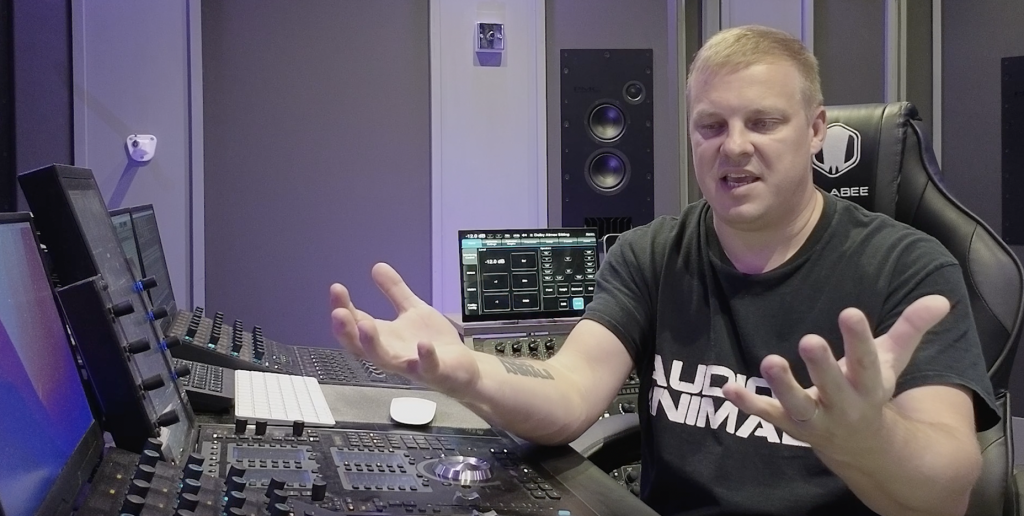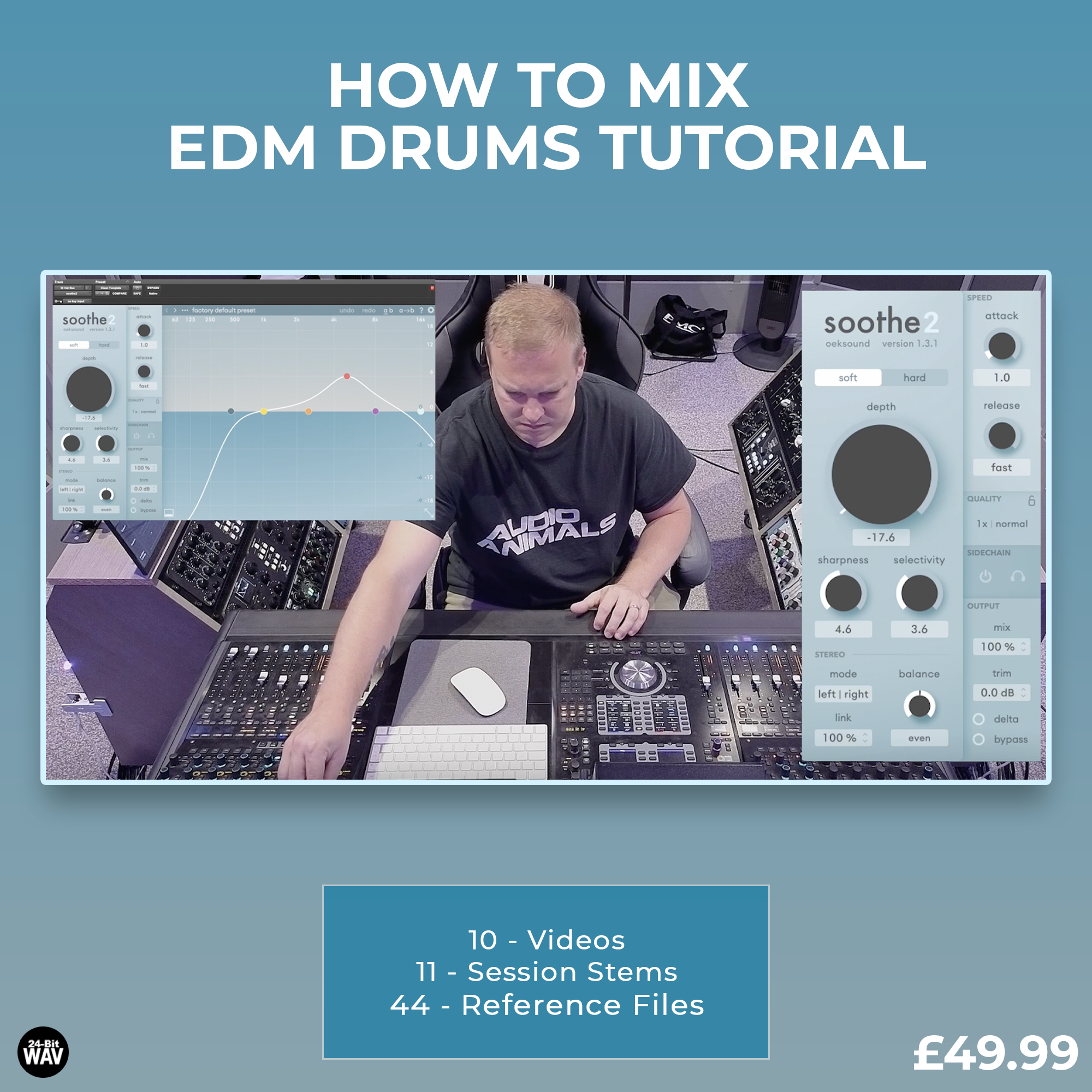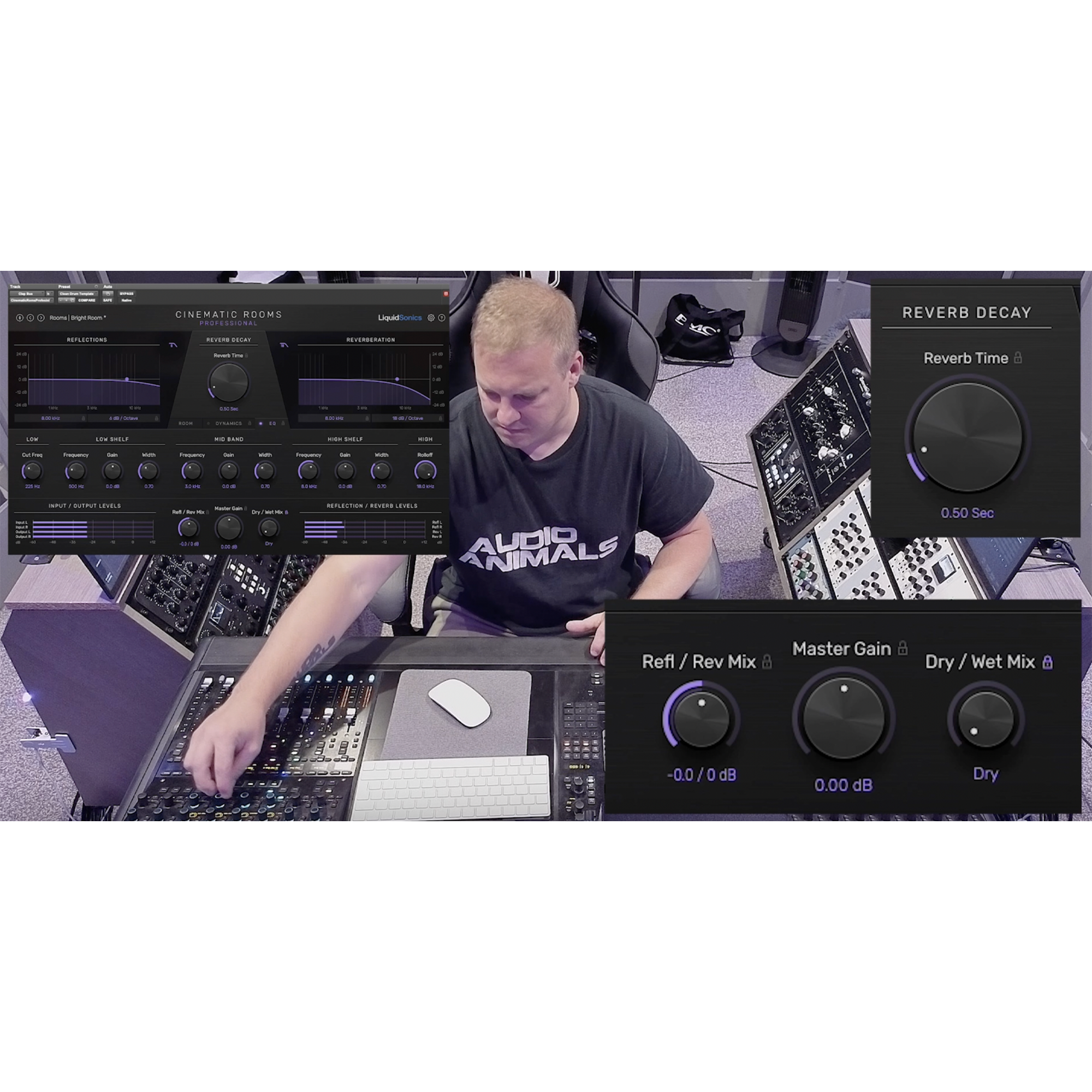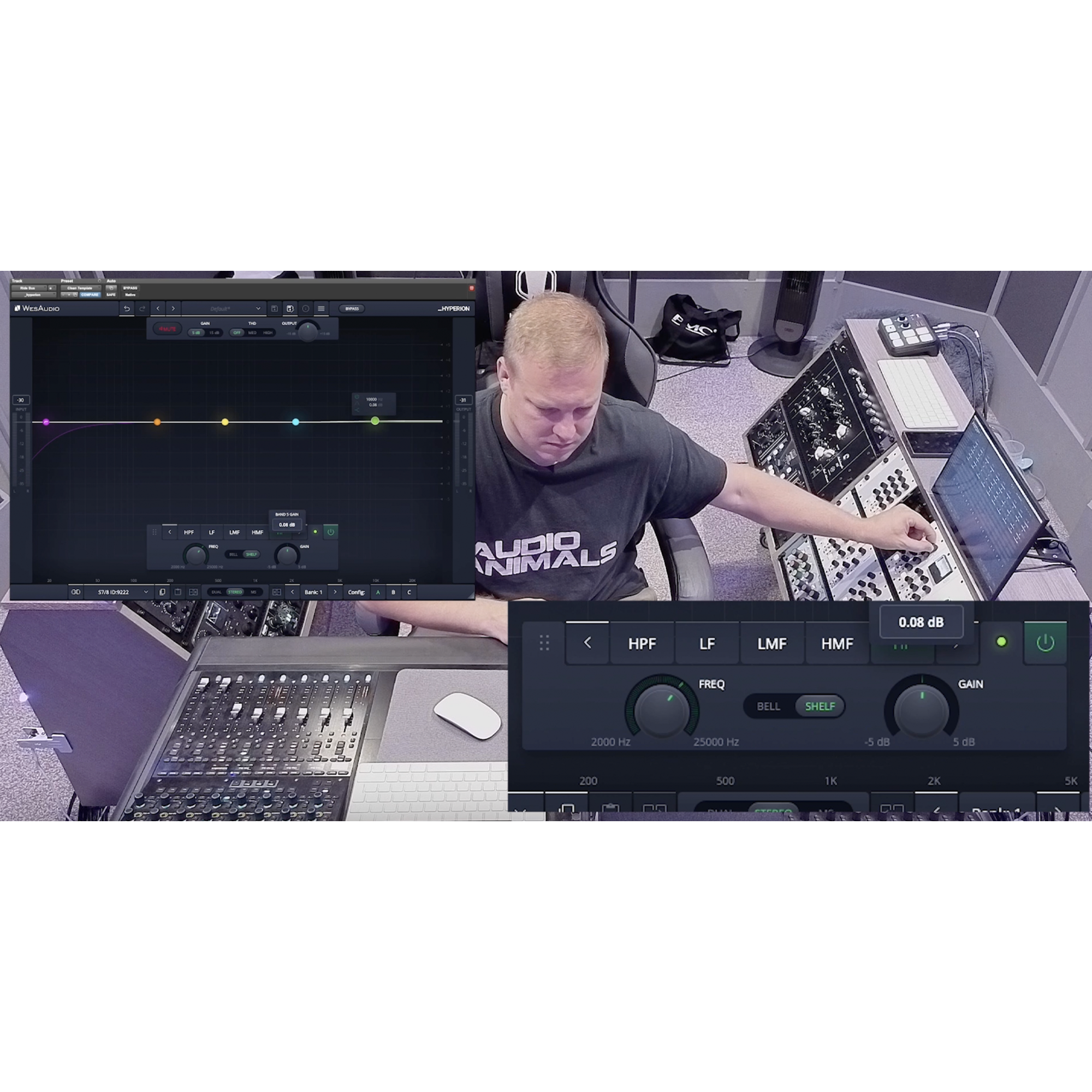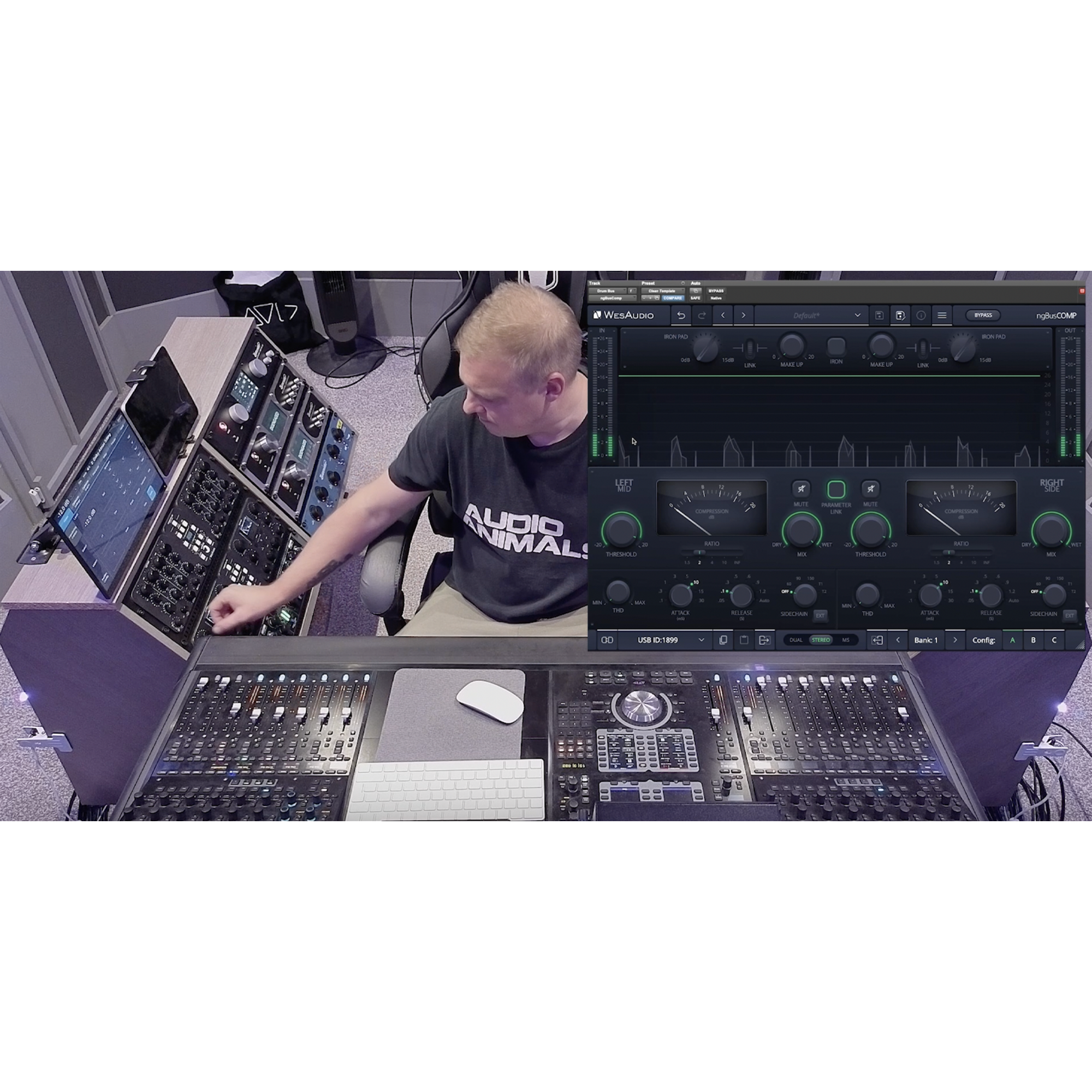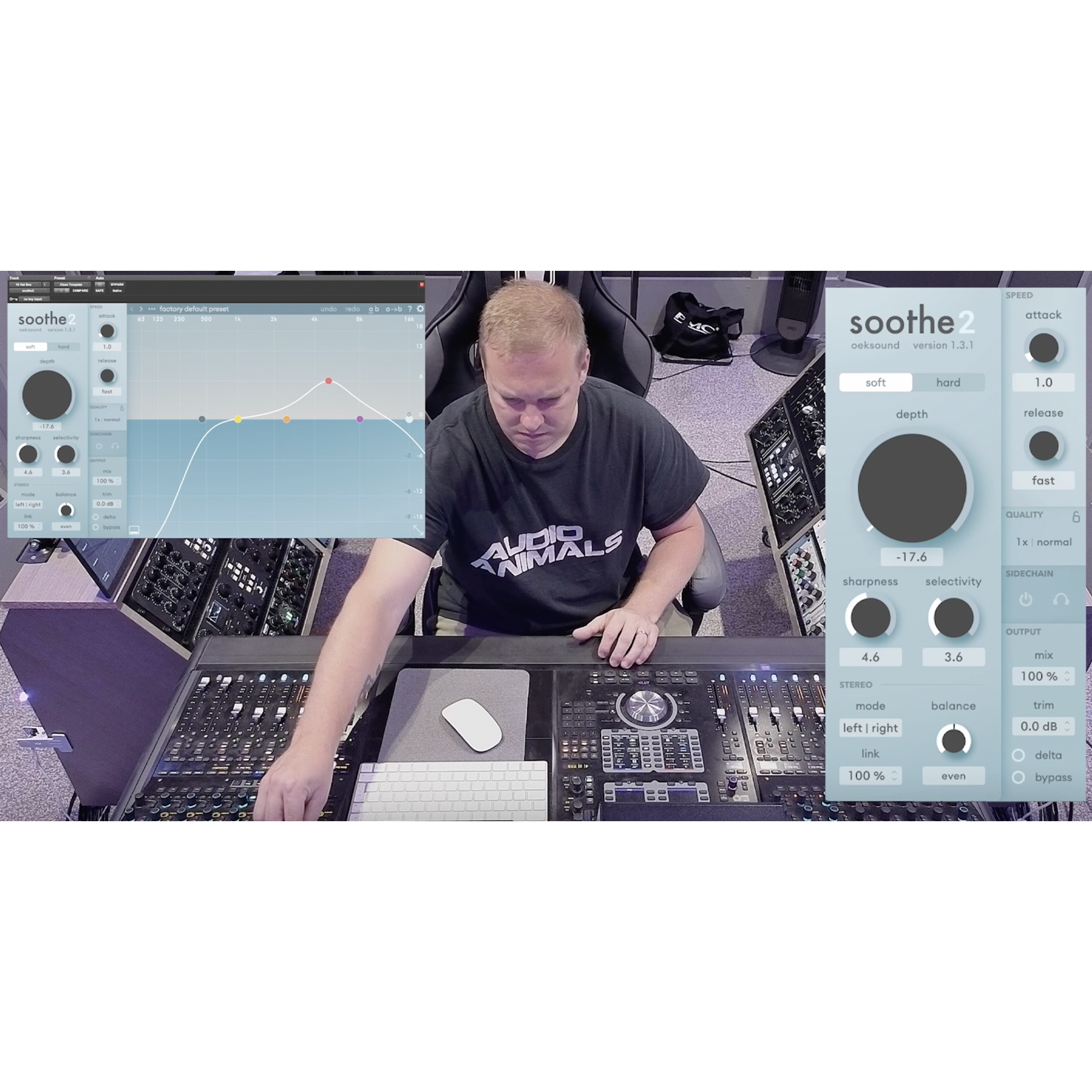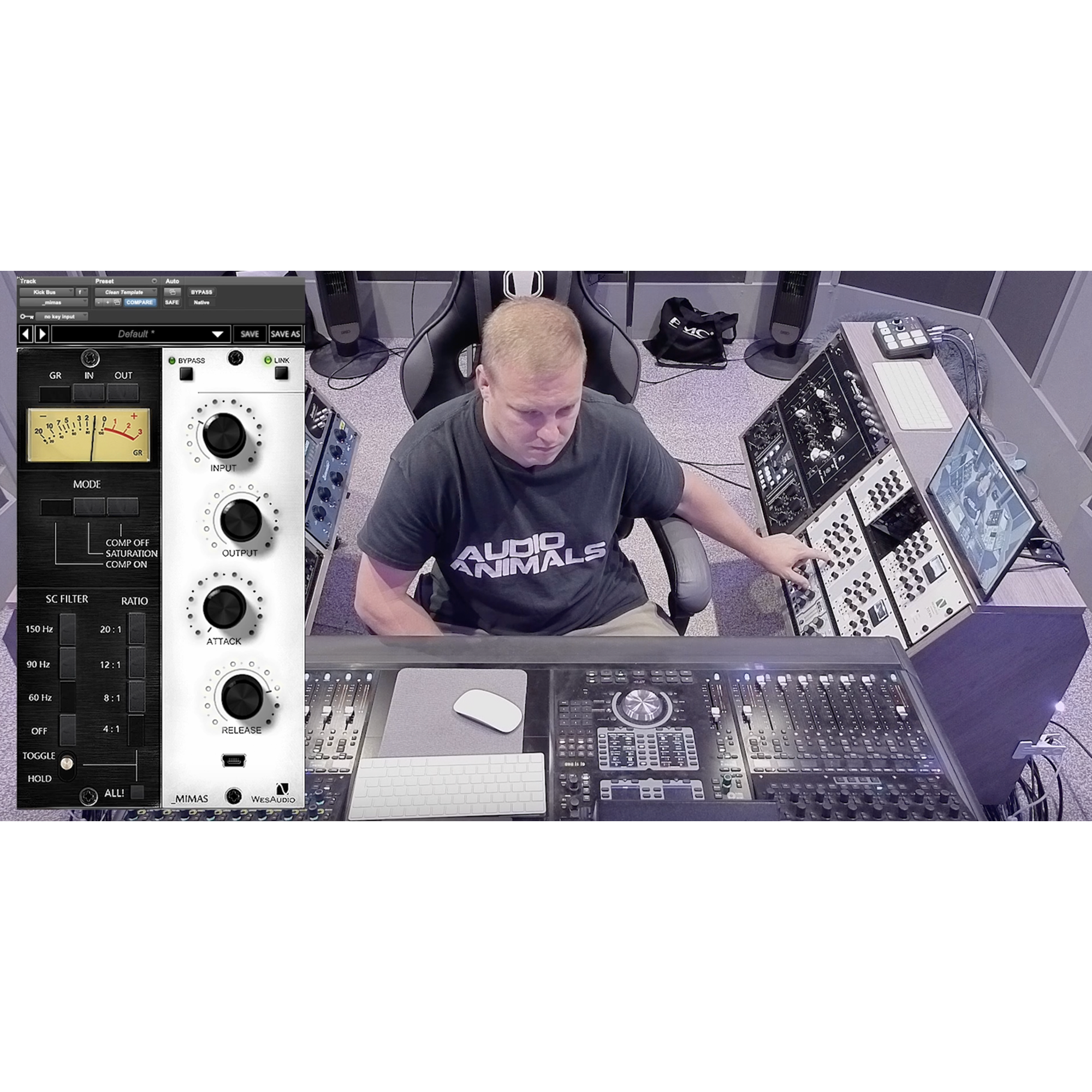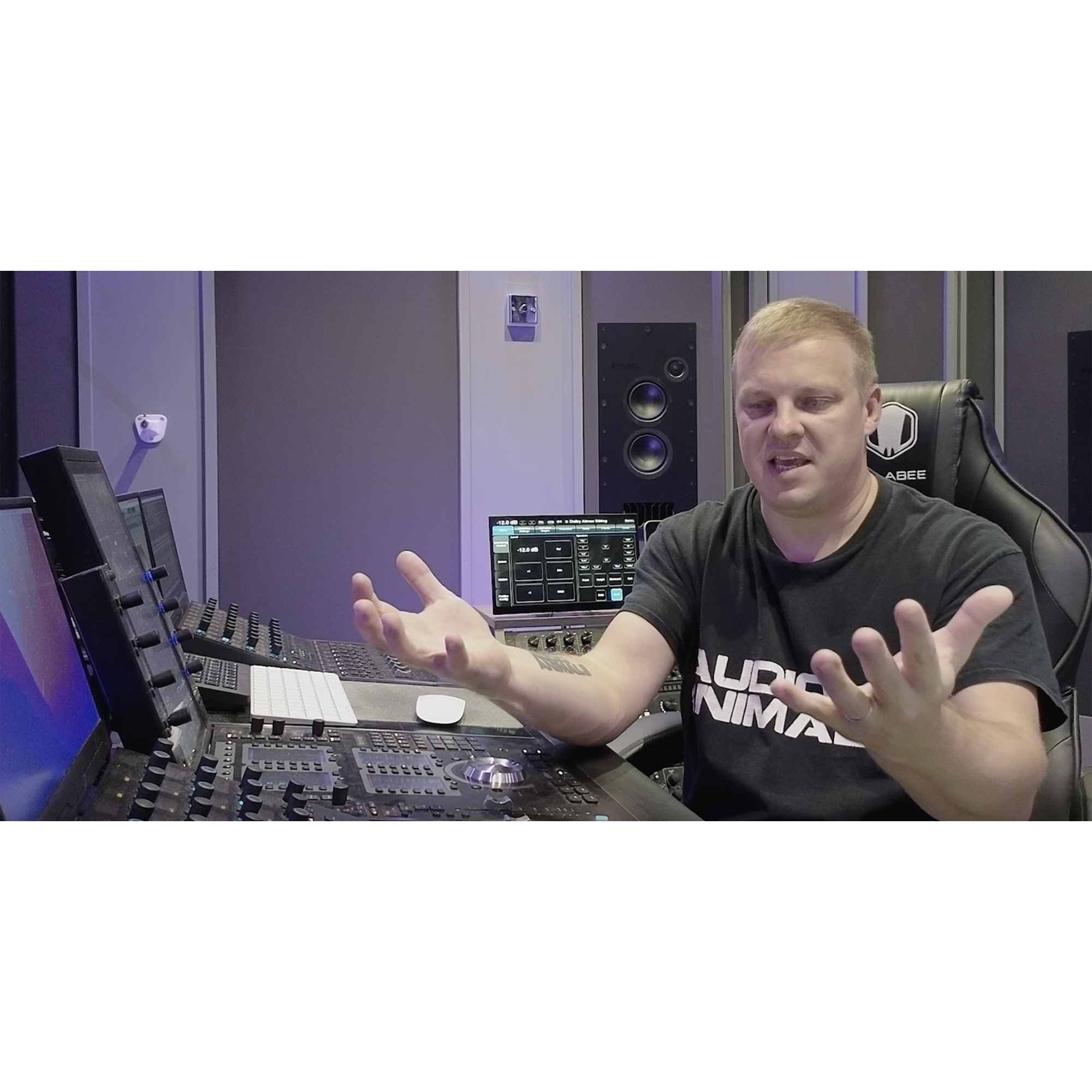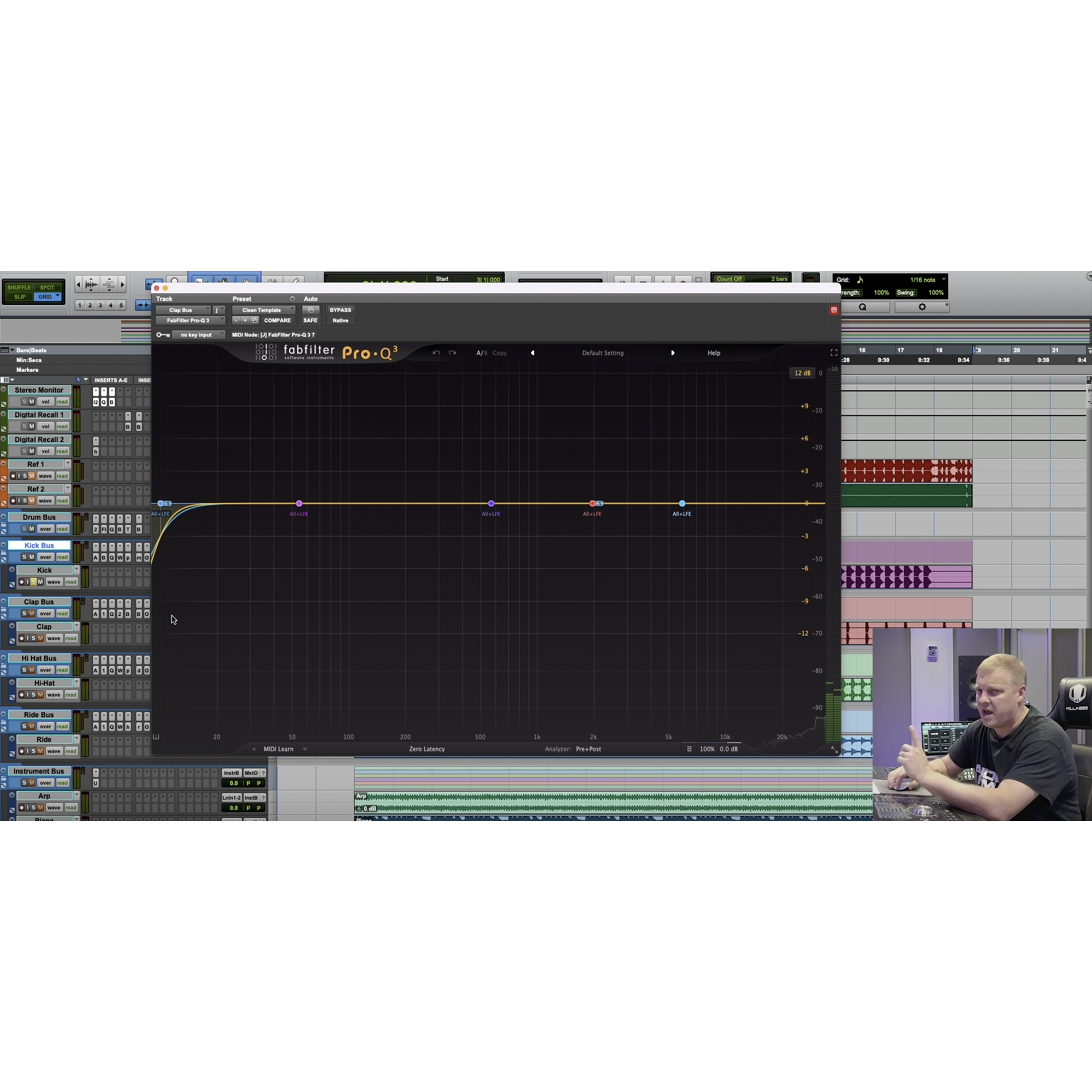We believe hands-on experience is the best way to learn, which is why all tutorials include downloadable session stems and reference files. This enables you to follow along at your own pace, using your own workflow in any DAW. Each tutorial features screen recordings of both plugin and digitally recallable analogue processing. Use the reference files to compare your progress with the desired sound, helping you better understand not just how, but why, you’re making certain choices.
Included With Tutorials
- Downloadable Video
- Screen Recording
- Session Stems
- Reference Files
SAMPLE VIDEO
The sample video offers a clear overview of the course structure and the valuable insights provided through detailed discussions. At each stage, Paul explains his approach before demonstrating the process, followed by a discussion of why he made those choices.
- Discuss What I Am Going To Do
- Audio Example Showing What I Have Done
- Discuss What I Have Done And Why
- Audio Example Showing Before & After
SETTING UP A DRUM MIX
In the first part of this tutorial, we will begin by discussing how to set up a drum mix and how to prepare the session for mixing.
- Organise Stems Into Folder Tracks
- Create A Drum Bus
- Routing The Drum Mix
- Choosing The Right Plugins For Each Stem
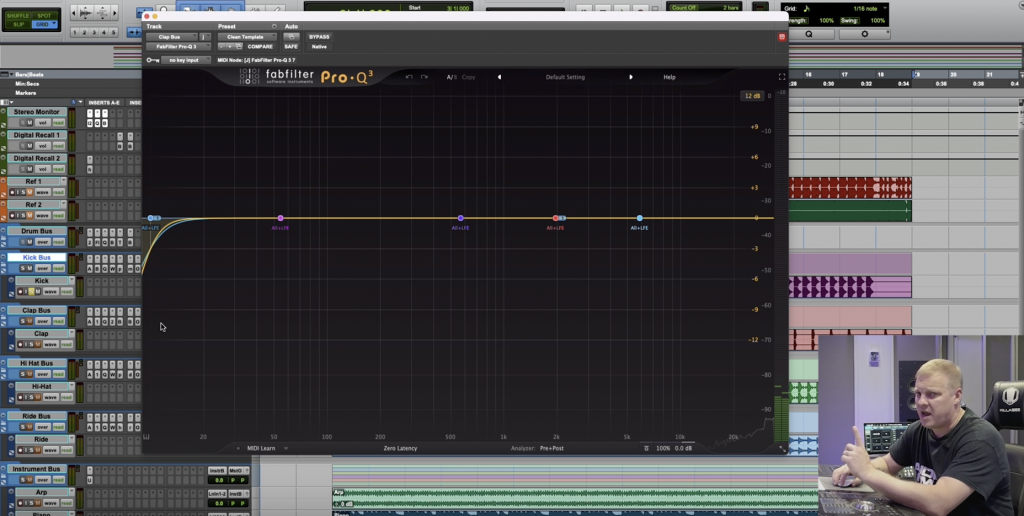
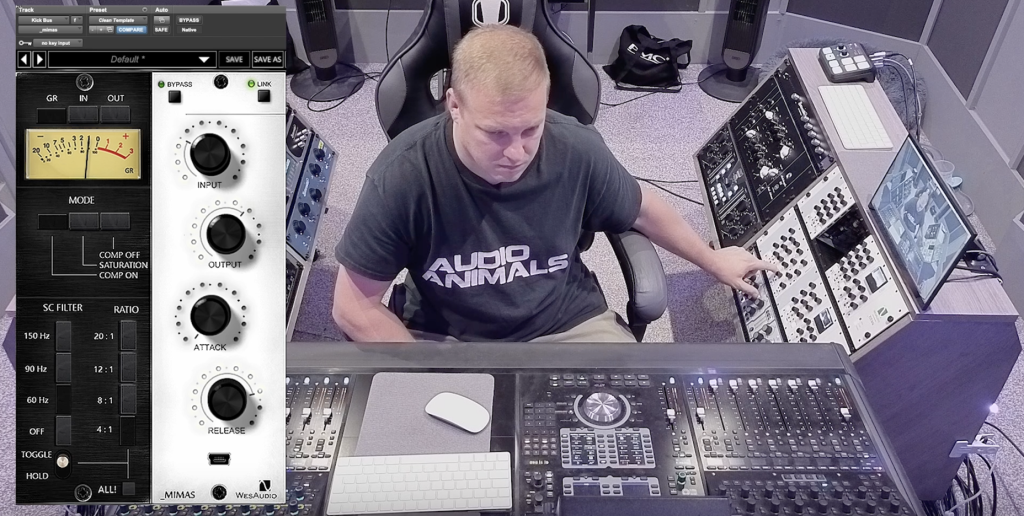
KICK PROCESSING
We begin the mixing process by processing the kick drum to achieve optimal body and punch. The kick serves as the driving force in EDM, and a well-balanced kick is essential for a successful drum mix. Our goal is to ensure the kick stands out, sounding tight and controlled while cutting through the mix effectively.
- Understanding Bass Resonance
- How To Compress A Kick Drum
- How To EQ A Kick Drum
- How To Use A Transient Designer
- Ensuring The Low End Is Mono
CLAP PROCESSING
Next, we’ll focus on processing the clap. The clap needs to complement the kick, as the two sounds interact closely. The goal is to create a dynamic balance where the kick and clap bounce off each other without competing for space in the frequency spectrum.
- How To Roll Off Unwanted Low End
- How To Compress A Clap
- How To EQ A Clap
- How To Widen A Clap
- How To Use A Transient Designer
- How To Add Harmonic Content
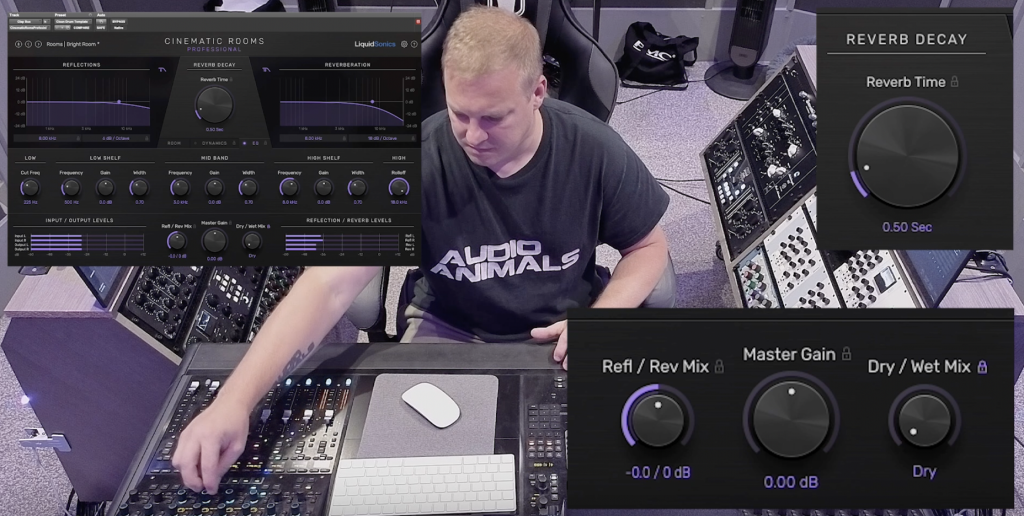
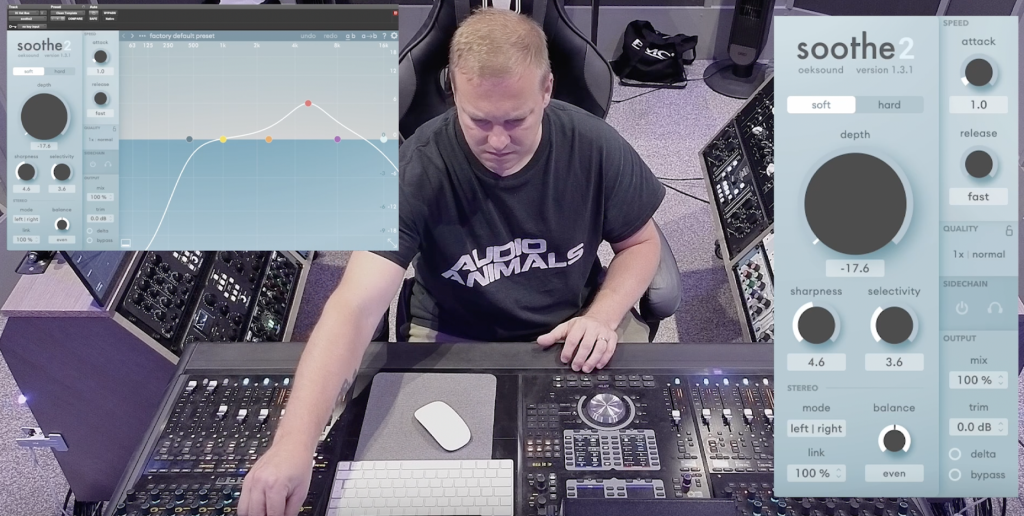
HI-HAT PROCESSING
The hi-hat in this track adds rhythm and movement, filling the space between the kick and clap. Hi-hats often get lost in the mix, so in this next step, we’ll focus on enhancing the sheen of the drum mix, ensuring the hi-hats remain clear and present.
- How To Roll Off Unwanted Low End
- How To Compress A Hi-Hat
- How To EQ A Hi-Hat
- How To Remove Harshness
- How To Add Reverb To A Hi-Hat
- How To Use A Transient Designer
- How To Add Harmonic Content
CYMBAL PROCESSING
Lastly, we will incorporate the ride cymbals into the drum mix. Cymbals bring a touch of sizzle and width, enhancing the overall stereo image and adding emphasis to the drums, making the mix feel more expansive and dynamic.
- How To Roll Off Unwanted Low End
- How To Compress Cymbals
- How To EQ Cymbals
- How To Remove Harshness
- How To Add Reverb To Cymbals
- How To Add Harmonic Content
- How To Add Width
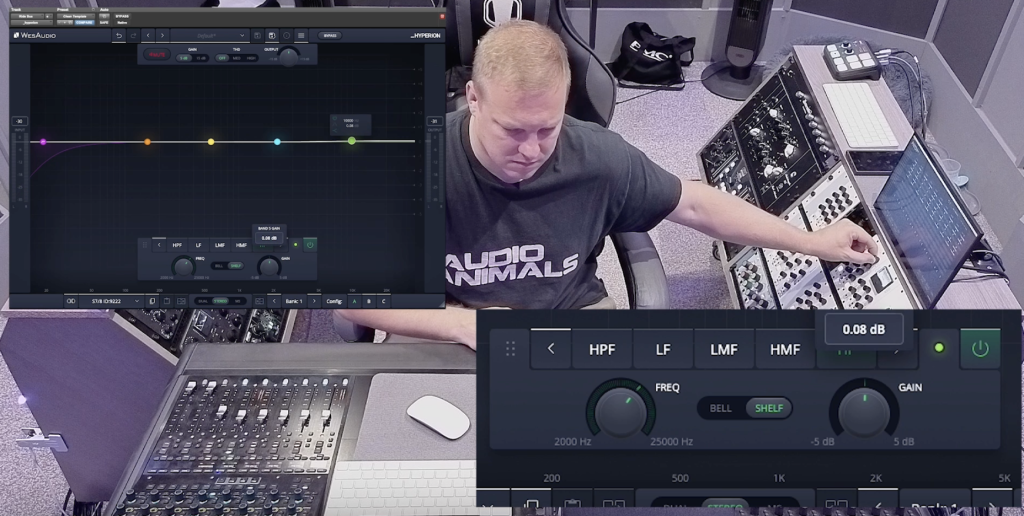
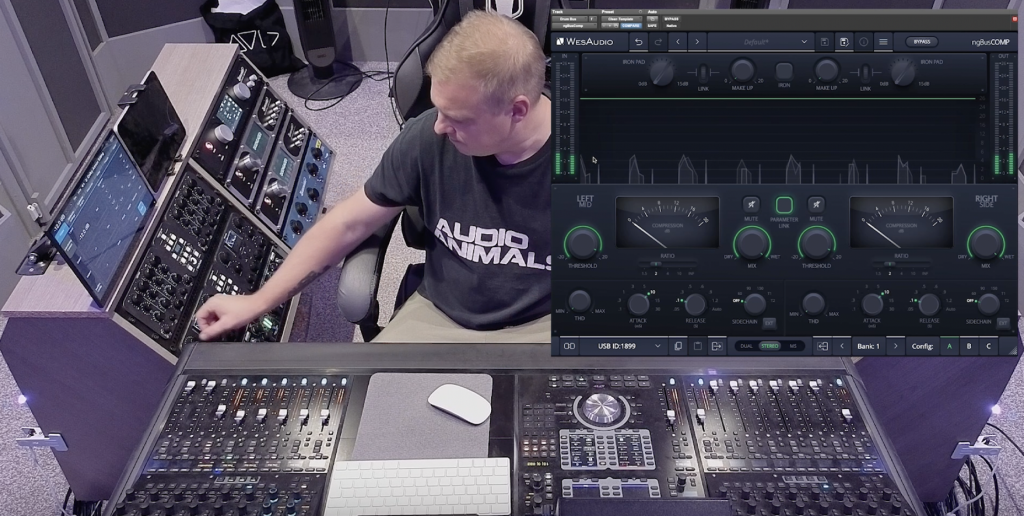
DRUM BUS PROCESSING
The final stage of the drum mix involves gluing each sound in the drum mix together to create a cohesive and well-controlled sound that cuts through the mix with clarity and impact.
- How To Add Bus Compression
- How To EQ The Drum Mix
- How To Add Parallel Processing
- How To Add Harmonic Content
- How To Ensure The Low End Is Mono
FREQUENTLY ASKED QUESTIONS
In the final part of this course, I’ll sit down to discuss frequently asked questions related to mixing EDM drums, providing further insights and practical tips to help refine your skills in this area.
- What Makes A Good Drum Mix?
- Do I Need Analogue Hardware To Get A Good Mix?
- Do I Need To Make My Kick Mono?
- Should I Pan Drums?
- How Do I Create A Clean Template?
